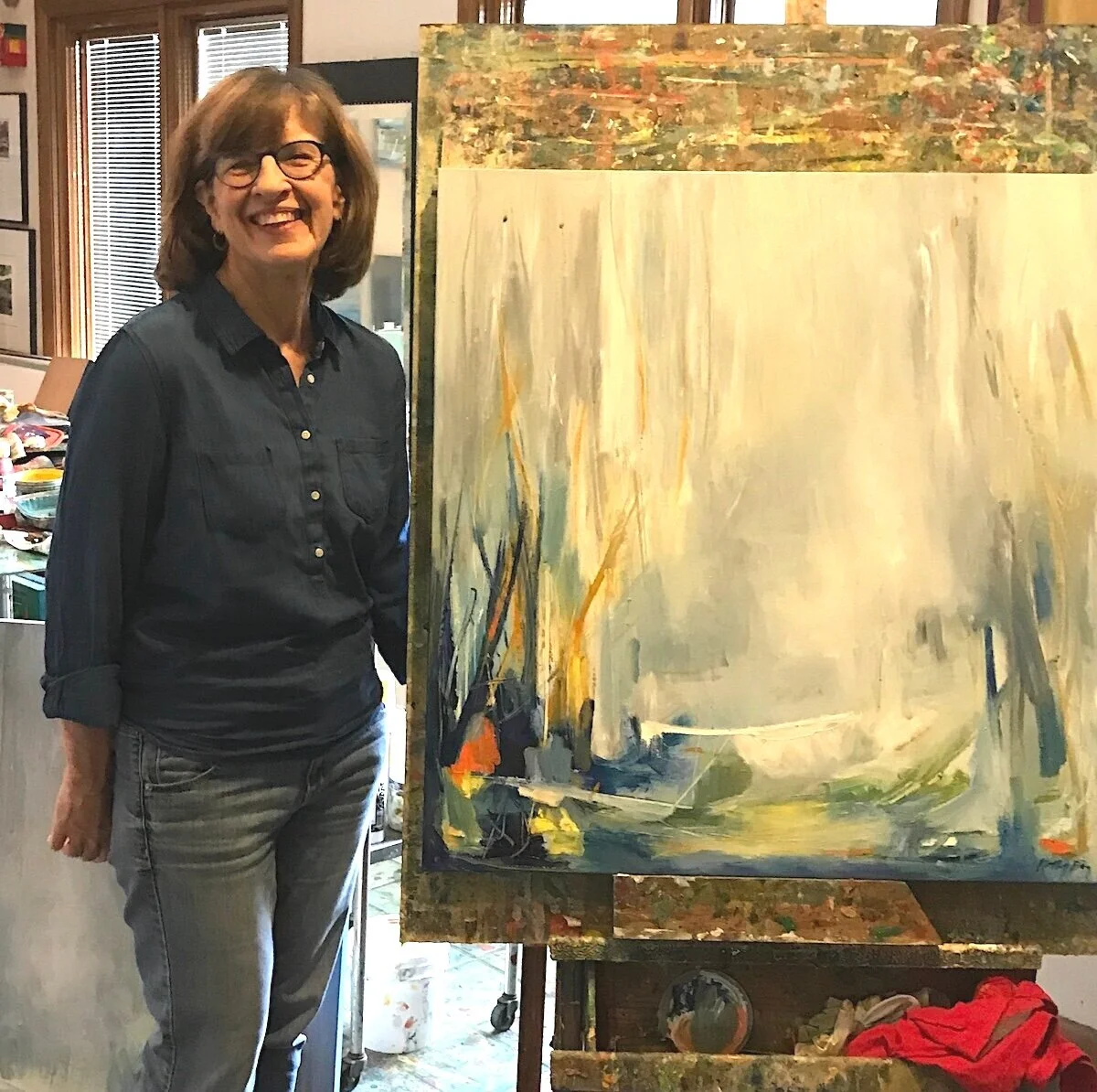Interview with artist Catherine Rodgers
Catherine Rodgers is all about creating – and that comes through in the breadth of her work and what she describes as her eclectic style. She is fearless in the studio. A native of Arkansas, Catherine has deep family ties to Little Rock. In addition to being a full time artist, she is an art writer and art instructor and she manages her own gallery, Catherine Rodgers Contemporary Art in Little Rock. Her textural mosaic-like abstracts can be found there and at her website.
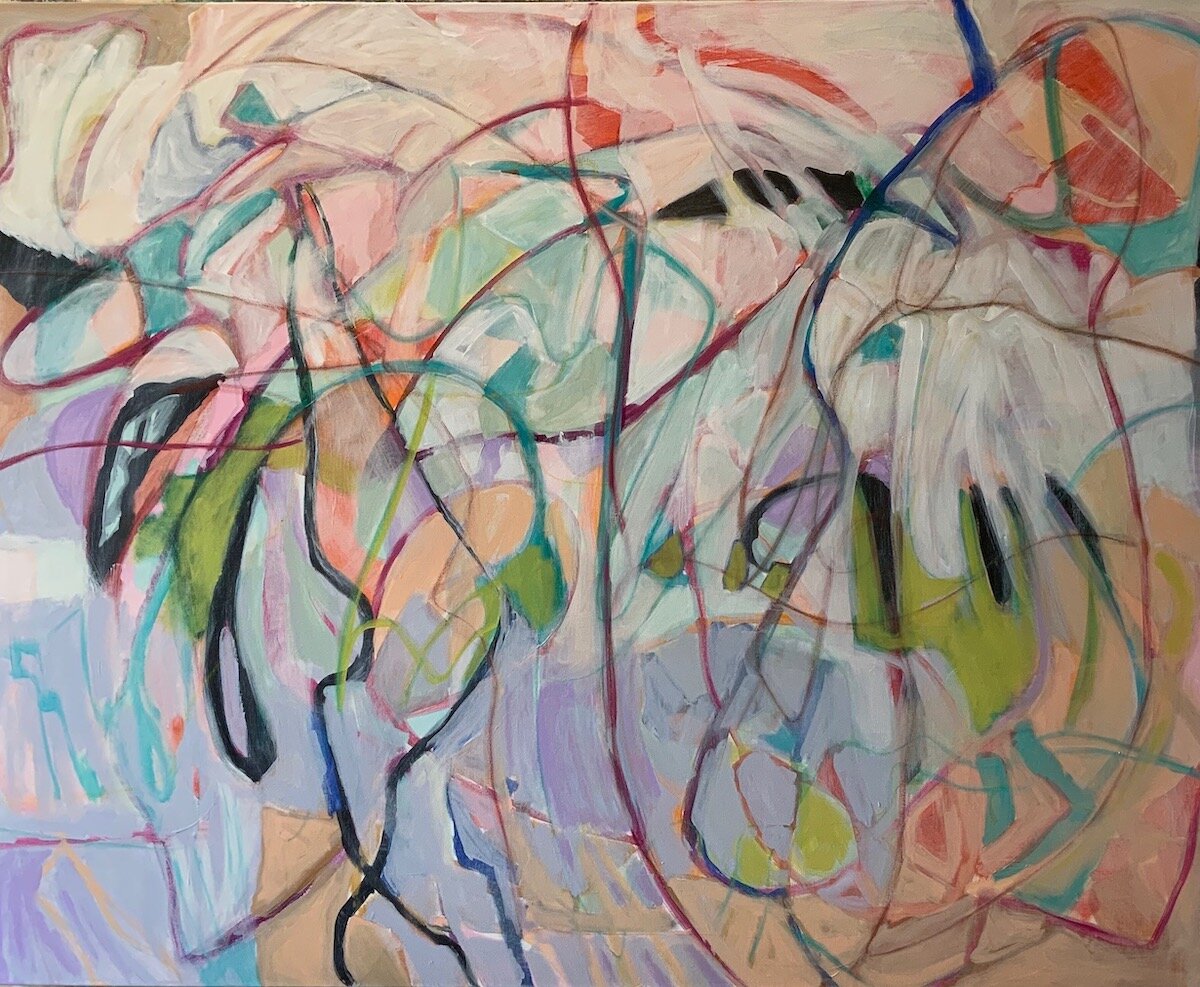
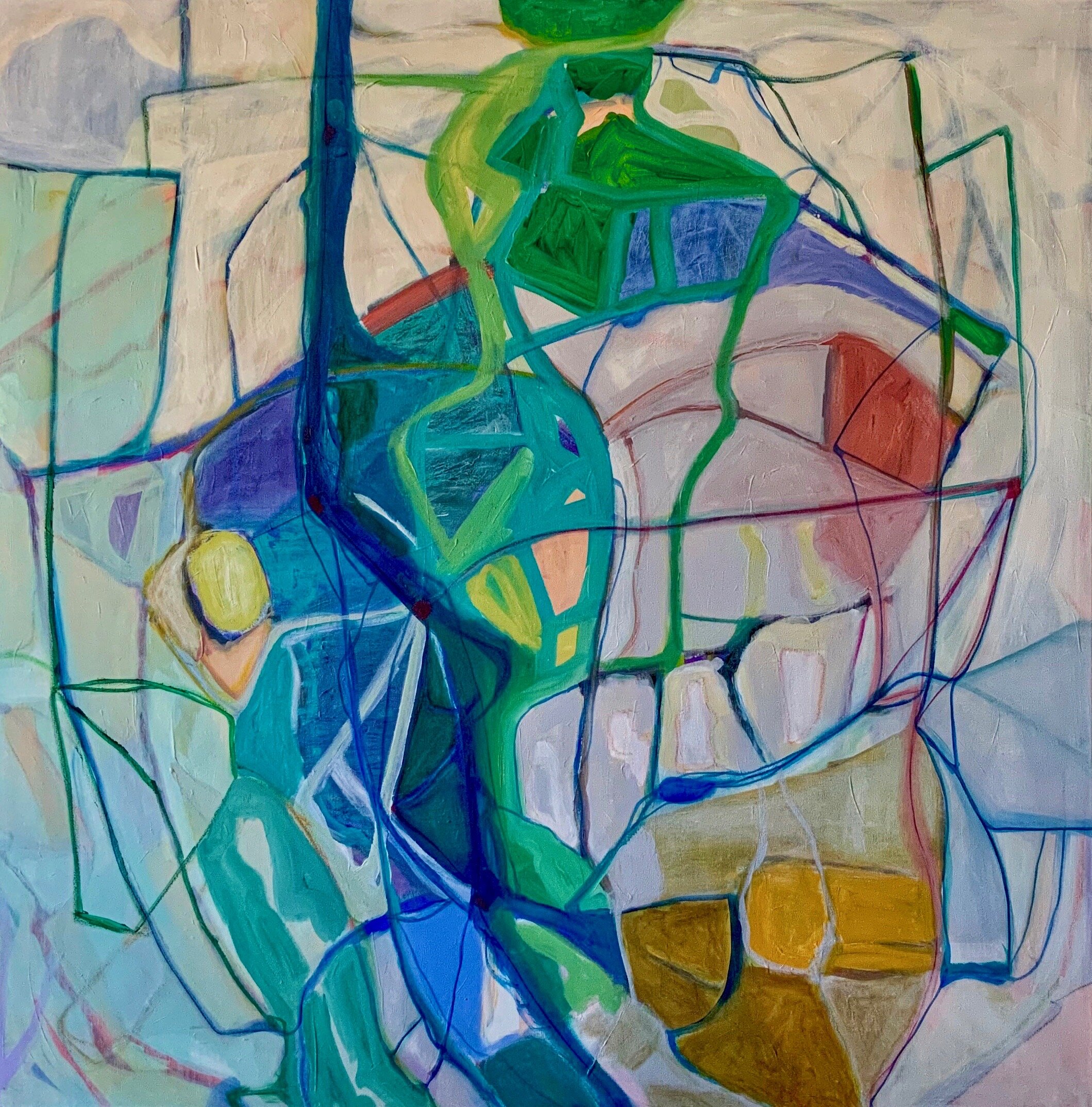

AAS: You’ve said you always loved art and always wanted to paint, but you have other interests as well. Talk about that.
CR: My father and both my grandfathers were perfectionists in their professional careers. They worked long hard hours in the building trade and took enormous pride in their craftsmanship. Credit belongs to them for my work ethic and love of creating art.
Working with a variety of materials is what I find interesting. Painting teaches the basics such as color theory, form, light, shade, line, and perspective, but there’s so much more. It’s a satisfying tactile experience to work with plaster, plastic and concrete, but problem-solving, an integral part of the art process, is the most satisfying. That’s what keeps me in the studio virtually every day.
Catherine in her studio.
AAS: How has your education in business administration helped you become a gallery owner and full-time artist?
CR: Before becoming a full-time artist I worked for major corporations in marketing, and I am the founder of Barefoot Yoga Studio, so I am comfortable with the sales process and owning my own business. The marketing of art is different from other types of retail and has an interesting past.
In the mid-19th century, French art dealer Paul Durand-Reul supported artists with stipends and solo exhibitions. He is considered the first modern art dealer and played a significant role in the acceptance of the Impressionists. In the past, dealers purchased the entire collection of paintings from an artist and resold them for a profit.
Today, most galleries are consignment shops. The artist delivers his or her work to the gallery and receives nothing unless it sells. Commissions can be up to 50 percent of the sales price, and the artist has to agree not to sell his work below the gallery price and/or within a certain region of the country. Basically, the artist gives up control of his product and is at the mercy of the art dealer to promote and sell the work.
Galleries have represented me in the past, and part of me would like to be represented by one again because I would like for more people to see my work, but they would have to promote my work with more enthusiasm than I can represent myself. With the abundance of social media, it’s easy to have your work in front of potential collectors. Holding sales at my art studio and having a personal relationship with my collectors are benefits of representing myself. This doesn’t happen when works are sold through galleries. I do, however, offer the same services as galleries, including delivery and installation of artwork in central Arkansas at no charge. Another advantage of selling my own work is that it is more affordable than what one would expect to pay in a gallery.
“My teachers helped me get to where I am today, so teaching is my way of paying it forward.”
AAS:: You do a lot of commission work. How did you become known for that?
CR: I think it all goes back to the Arkansas Arts Center. Over the years, and whenever my schedule allowed, I enrolled in classes: furniture, jewelry, painting, watercolor, and pottery. My home collection of art was becoming overwhelming so in an effort to free up space for more art, I reluctantly signed up to participate in the Arkansas Arts Center Museum School Sale. No one was more surprised than me when I sold out quickly and was number two in overall sales. Jim Johnson, of Cranford Johnson Robinson Woods advertising agency, was well known at that time for his position as the top seller. Being a twin, and thus naturally competitive, my sights were set on being number one. For the next 6 years, if my memory serves, I was the top seller. I don’t know to this day if Jim knows I had my sights set on him. It was my silent little competition, and it made me a better artist. I am grateful to Jim. That’s where it all started. Galleries were reaching out to represent me and collectors started requesting commissions. Artists ask me often how I sell so much work and get so many commissions. I really don’t know how to answer that question. I work hard, I love what I do and I’m not attached to the outcome. I create work that makes me happy and gratefully, it makes others happy, too.
AAS: You are also a journalist. How did you get started writing about art?
CR: I’ve written about a variety of subjects that have interested me over the years. In the mid-80’s and during the divestiture of AT&T, I wrote telecommunications-related articles for Arkansas Business. After I sold Barefoot Studio in 2002, I was asked to write spa and health-related feature articles for the Arkansas Democrat-Gazette, which led to writing their Personal Space column for eight years.
Today, my interests are all about art. My husband and I enjoy traveling and we have attended Art Miami Week and Art Basel several times. Writing about art is just a natural progression. Seeing what’s new in the art world is thrilling and something we look forward to each year.
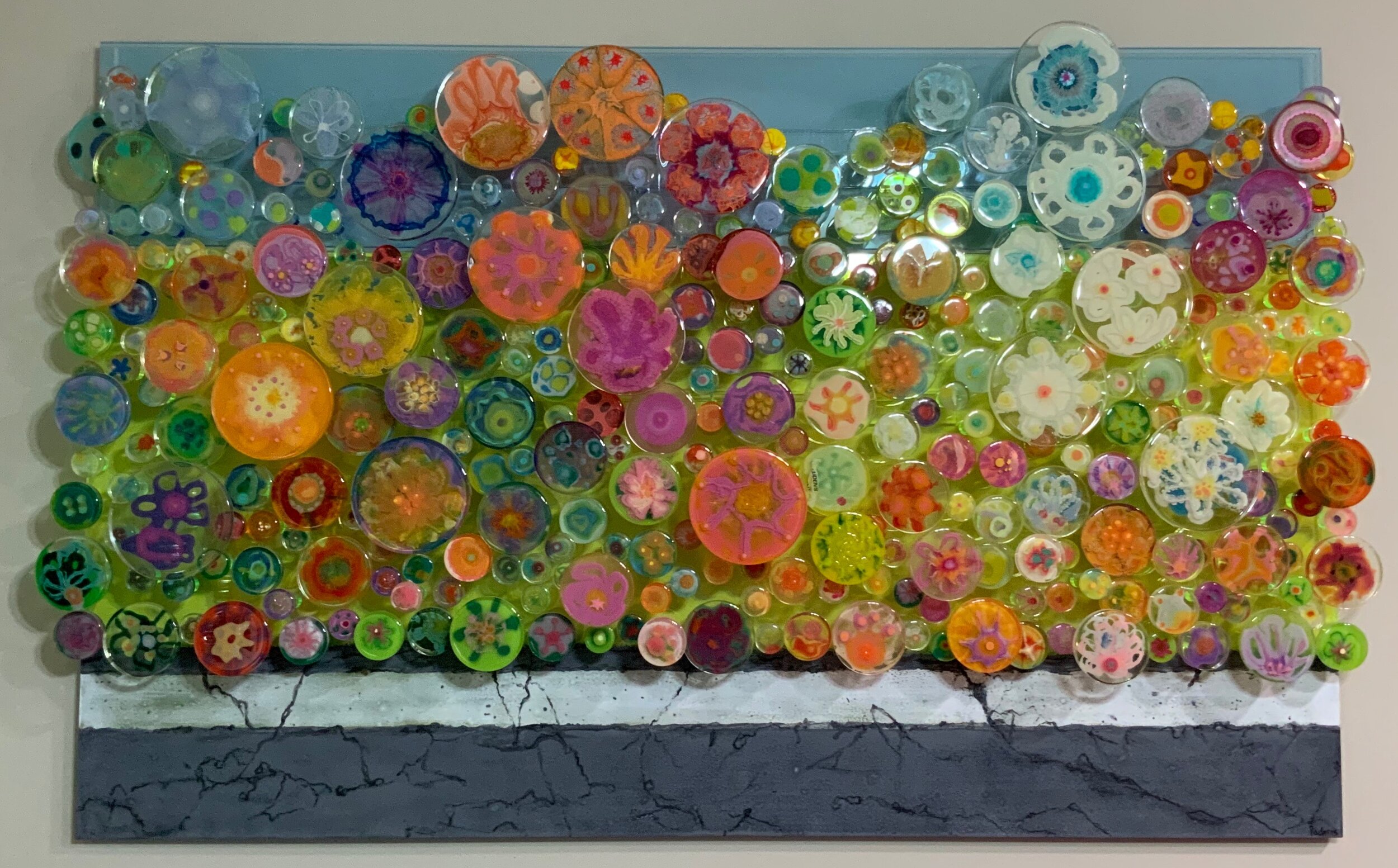
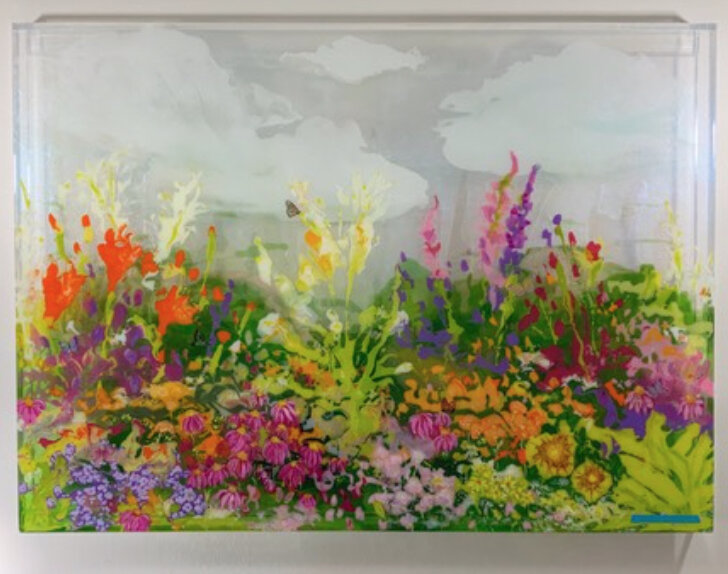
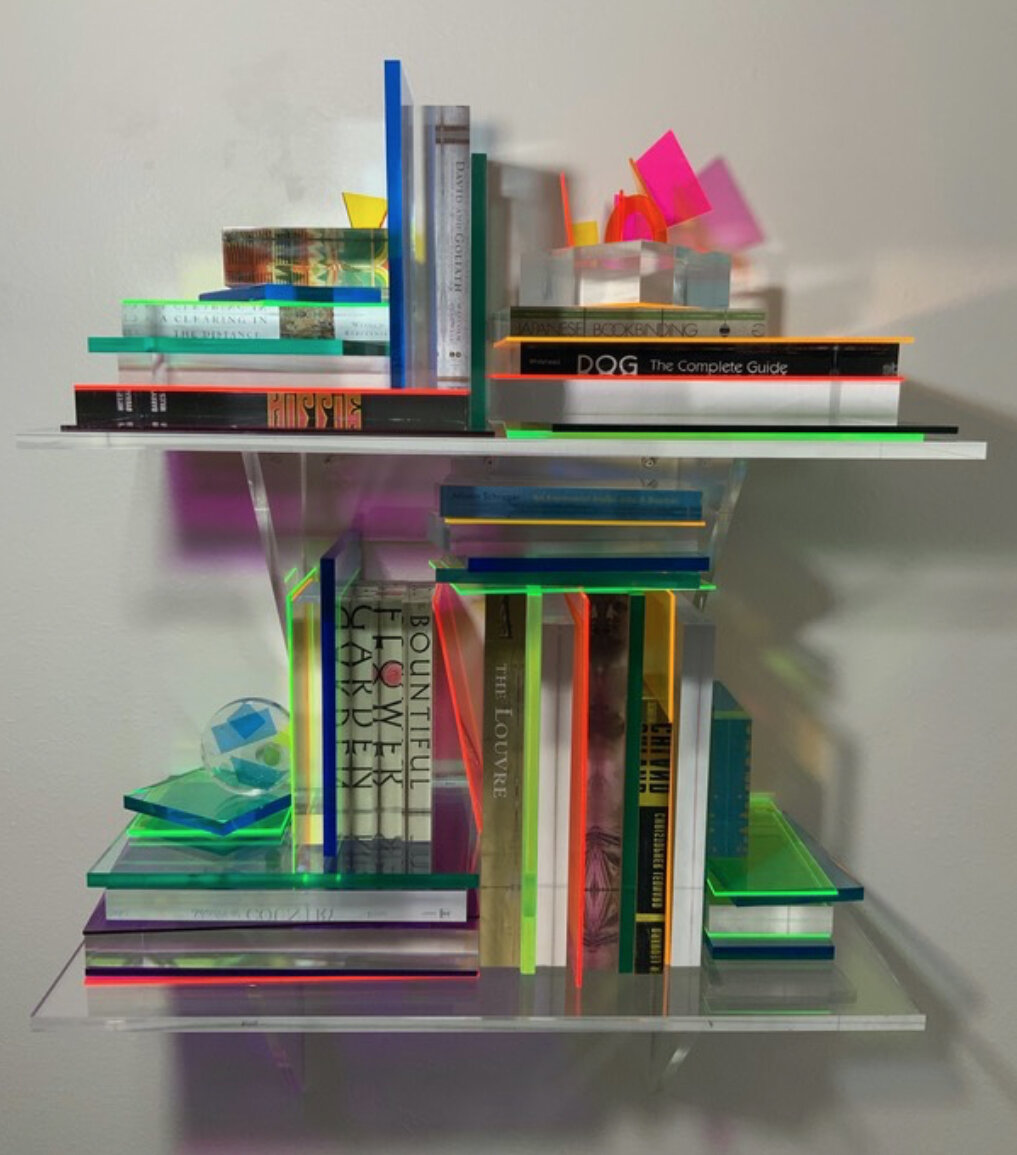
AAS: Teaching art seems to be something you really enjoy and do a lot of.
CR: My teachers helped me get to where I am today, so teaching is my way of paying it forward. It all started with the Arkansas Arts Center. It’s a gem, and has been a part of my life since early childhood. I recall playing the part of a tree swaying in the wind in a summer play when I was maybe 7 or 8 years old. It's their fault that I am a tree-hugger and I have painted this image.
Several years ago, the Arkansas Arts Center asked me to become a member of their faculty. I teach workshops when my schedule allows. At this stage of my life, my interests are focused on creating art and the majority of my work is commissioned. It’s difficult to commit to a long-term teaching schedule, but I enjoy teaching weekend workshops. I also teach annually at Rancho La Puerta Resort and Spa in Tecate, Mexico.
AAS: You work a lot with Plexiglass [acrylic sheets] and resin. What is it about that medium that interests you?
CR: Technology makes it all possible. With CNC routers and lasers, you can create any shape you can think of out of acrylic sheets. They are available in a beautiful array of colors and choice of fluorescent, transparent or opaque. Add resin on top of the acrylic and the possibilities are endless. Resin is an amazing medium that is glass-like in appearance, but much more durable. Almost any colorant can be added to resin to be used in a painting, a mold, or simply poured over a canvas, wood, or acrylic. I am self-taught when it comes to resin, so I was never told that I couldn’t do something with it. If I can think of a project, I have tried it. Sometimes they fail and sometimes they are successful, but I love them all.
AAS: Some of your acrylic wall sculptures remind me of the colorful millefiori glass canes used to make paper weights, but, of course, on a much larger scale.
CR: Observers have also told me they look like buttons, but in reality, most of the pieces are 6 inches in diameter, so much larger than millefiori. Rural Route is over 5 feet wide, and A Dozen Butterflies is also large. They are both made of poured resin and colorants and designed to look like flowers. However, the process is somewhat different for these two artworks. Hundreds of pieces designed to look like flowers were created for Rural Route. Some of them even have small pieces of trash embedded in them. They are individually attached to an acrylic substrate using varying lengths of acrylic rods to give the artwork depth. A Dozen Butterflies consists of numerous layers of resin and colorants poured on top of a clear acrylic five-sided box with a French cleat attached for hanging. It gives it a 3-D appearance and the image seems to float off the wall.
AAS: One of my favorite pieces is Totem. I see something new every time I look at it! Does it incorporate resin to give it added depth?
Totem, resin, pigment on canvas, 50” x 62”, framed in blue acrylic
CR: Totem is comprised of several layers of poured resin combined with colorants over canvas. It’s framed in fluorescent blue acrylic, which is my favorite framing material. The process starts by combining resin with hardener and mixing by hand for several minutes until the mixture becomes clear. At that point, you have 45 minutes to use the resin before it starts to heat up and cure. Next, a small amount of resin is mixed with the desired colorant and poured on a canvas to create the painting. Almost any colorant can be added including oil paint, acrylic paint, alcohol inks, and powdered pigment. It’s best to let the painting cure for 24 hours before adding a second layer of resin. I don’t recall how many layers of resin are in Totem, but it is about 8. After I am happy with the image, I add another layer of clear resin on top to give paintings a smooth finished look.
I have always loved totems because of their spiritual significance. They often display reverence for animals and plants and identify one’s clan or tribe. My heritage is Scottish, English, Irish and American Indian, thus, an indescribable totem.
Quietly Whispers, pigment, hot wax, cold wax on canvas, 60” x 48”
AAS: Your wax paintings also have an added depth and texture. Talk about that process.
CR: I am drawn to working with wax because of its permanence and historical background, plus the brilliance of color and visual effect. The wax process is simple. Pigment is mixed with beeswax and resin and worked from a warm palette, using a brush for hot wax applications. The final treatment is use of a heat gun to fuse and bond the painting. For cold wax, a solvent is added to the wax and pigment mixture, softening it for application with a palette knife. One advantage in working this way over oil paint is the painting hardens quickly compared to slow-drying oils. An added benefit is that my studio smells like honey when I am working with beeswax, making it a delightful experience. Bees have even dropped by, as if they have found their home.
Symbols, plaster, wire, wood and paint, 30” x 40”
AAS: I love your wall sculptures, especially Symbols. What inspired you to start working with that form?
CR: It’s paying homage to my maternal grandfather, who was a plasterer. Using simple materials of wood, wire and plaster, my grandfather created birdbaths, outdoor furniture and plant stands in his spare time. Local residents may remember some of his work. As a child, my mother shared stories of how he built the large sculpture There was an Old Woman Who Lived In a Shoe, based on the nursery rhyme, and the enormous Orange Pumpkin at the Little Rock Zoo, which greeted visitors to the zoo for many years.
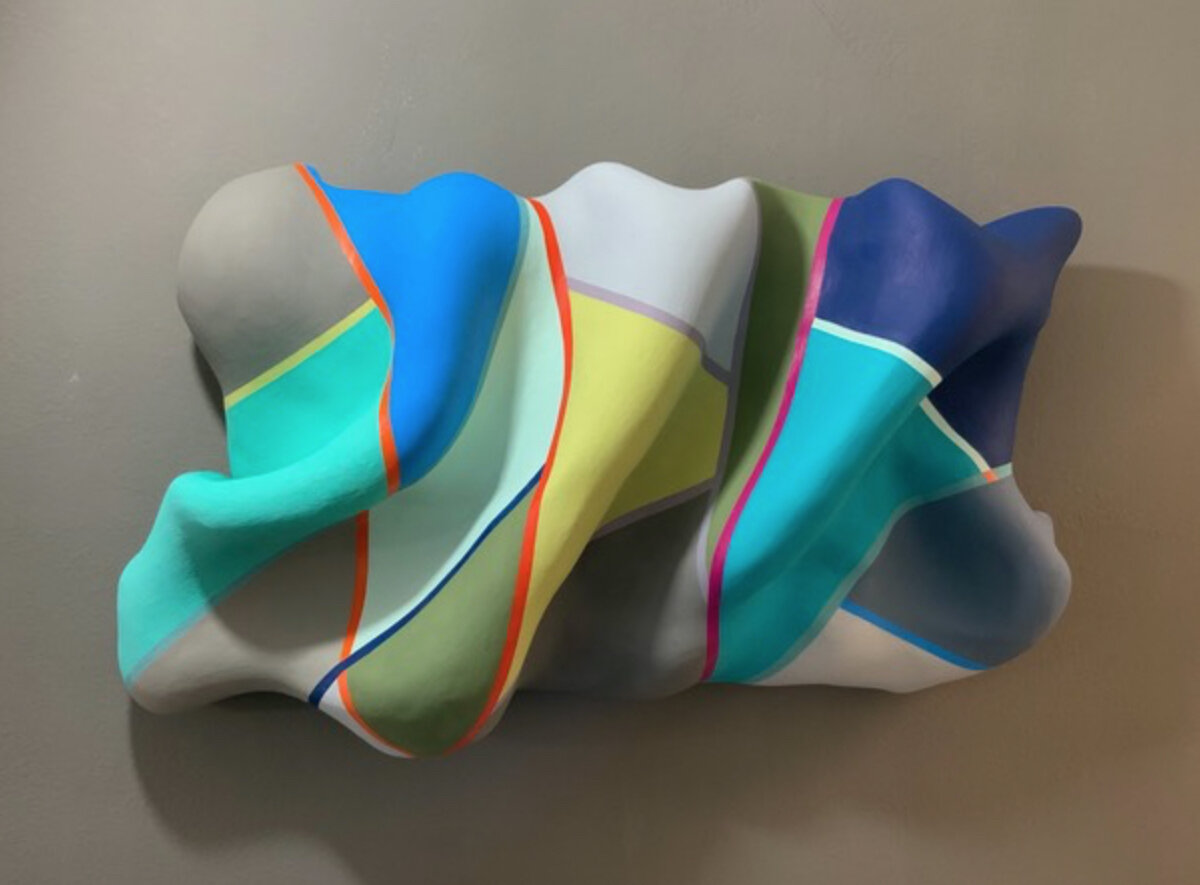
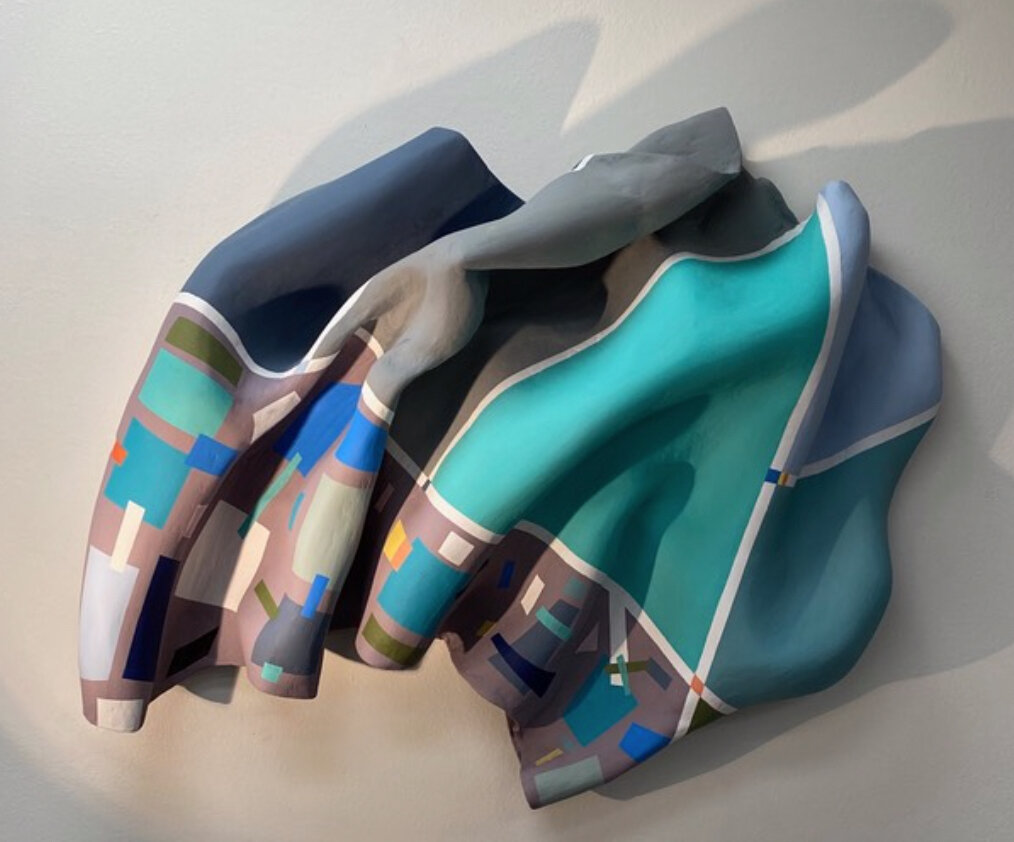
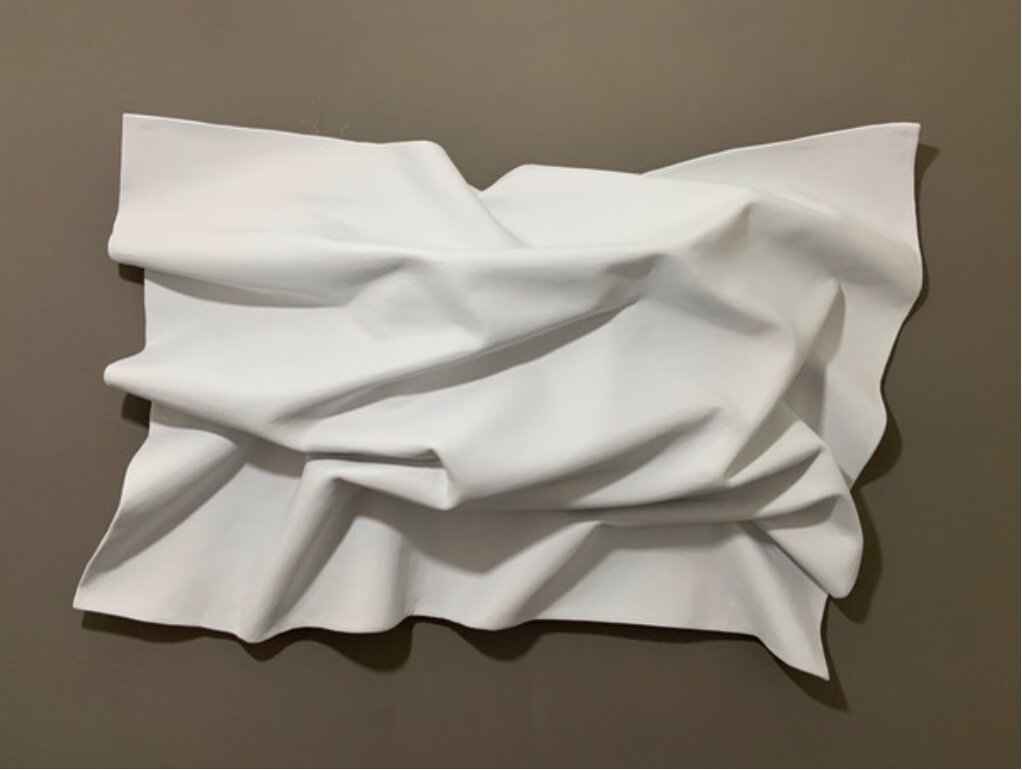
AAS: Talk about your recent ‘Speed Painting Project’.
CR: The pandemic we are in the middle of is horrific on so many levels. I simply wanted to make art more available and affordable to everyone who is spending significant time in their homes. Using acrylic paint and only allowing myself a few hours to complete the works (in most cases), the Urban series [in the first collection of works above] is a group of abstract paintings priced at one-half my normal price for a painting. I am revisiting a series of images I painted years ago that are landscapes viewed from the sky. As a child, I flew in my dreams, and these are memories from that time.
Jobs, oil on canvas, 48” x 36”
AAS: Your works Jobs and Pandemic were created to document significant events of the time. Would you comment more on the importance of doing that?
CR: From the time of cavemen, artists have been recording history. Picasso’s Guernica, a famous anti-war painting, is another example. Most of my collectors describe my work as happy and joyous. Bringing beauty into the world is what I strive to do, but sometimes current events call me to the side. I painted Jobs shortly after the financial crisis of 2008. Pandemic [see below] is my current offering to history. It is a constructed of bright fluorescent pink and yellow acrylic that almost shouts at the viewer. Words and saying associated with Covid-19 are laser cut into the acrylic to memorialize this time and the frame is made of concrete to symbolize the weight upon humanity. Life is a balance. As artists, we need to keep our eyes open and see all of it.
AAS: In Pandemic, you write, “assess what’s important”. What has kept you going and sane these last months?
Pandemic, fluorescent acrylic, resin on canvas, 50” x 50”, framed in lightweight concrete
CR: Being an artist is like being cloistered. I have worked alone in my studio for 16 years, so honestly, it’s not that different. I do miss having coffee and lunch with my friends, but gratefully, art collectors are still requesting commissioned work. I just started an eight-foot-wide resin arch that will span an entryway for one collector, which will keep me busy for a while. When I am not working on a commission, I have a chance to explore new work, and there are many ideas swirling in my head. That’s the best thing about being an artist: you are never bored.


